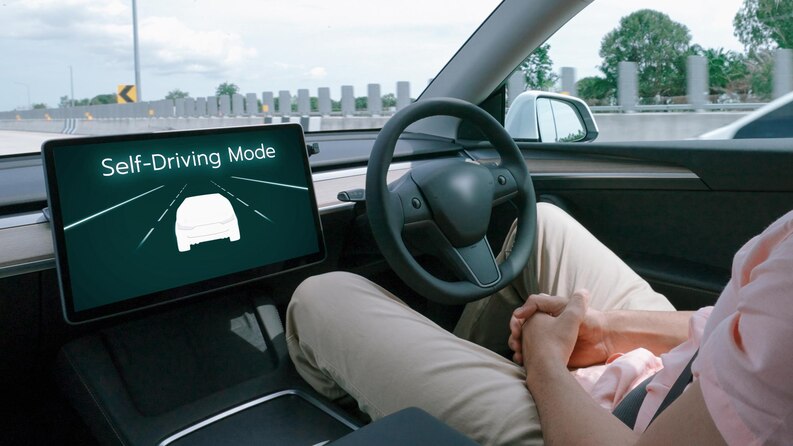Cars will be driven autonomously in the not-so-distant future as technology overtakes the automotive sector. Autonomous safety systems that are state of the art today have been made possible by the rapid progress made in artificial intelligence (AI), machine learning and sensor technology. This system aims to improve road safety by lowering environmental failures, catastrophe avoidance and driver/passenger safeguard. In this blog, I will explain you what Autonomous Safety is all about, how does it work and its place in mobility future.
Autonomous Safety Systems
Autonomous safety systems encompass a suite of technologies and features meant to safeguard the driver and all occupants, with sensors/radar/AI used by the vehicle to look at what’s around them. They are intended to identify danger in real-time, take actions to minimize and/or mitigate collision risk. Those are sometimes part of much larger autonomous driving tech that enable cars to run autonomously without human controls.
Autonomous safety systems consist of automatic emergency braking (AEB), lane-keeping assist (LKA) adaptive cruise control, collision avoidance systems and pedestrian detection are some important elements of such systems. They work together to make driving safer, keeping track of everything around you in the interest of looking for danger.
Autonomous safety systems are developing quite a bit with deeper embedment in private and commercial fleets alike.
Autonomous Safety Driver
An autonomous safety driver is a concept that has emerged alongside the development of autonomous vehicles. It refers to a system that takes over the driving responsibilities from humans, ensuring that the vehicle can operate safely without requiring constant human control. The safety driver can be thought of as the artificial intelligence-powered system that manages the vehicle’s actions, such as steering, braking, and accelerating, while continuously assessing the driving environment.
The safety driver uses a combination of technologies, including machine learning algorithms, real-time data from cameras and sensors, and high-definition maps, to navigate roads safely. This system is designed to respond faster than human drivers in emergency situations, ensuring that critical decisions are made quickly to prevent accidents. As the industry moves toward fully autonomous vehicles, the role of the safety driver will become even more vital, ensuring that vehicles operate safely even in complex or unpredictable environments.
Autonomous Safety Features
Autonomous safety features are integral to the overall effectiveness of autonomous driving systems. These features include sensors, algorithms, and real-time data processing that allow vehicles to detect obstacles, make decisions, and respond to changing road conditions. Some common autonomous safety features include:
- Adaptive Cruise Control (ACC): Automatically adjusts the vehicle’s speed to maintain a safe distance from the car in front.
- Automatic Emergency Braking (AEB): Detects potential collisions and applies the brakes if the driver doesn’t act in time.
- Lane Departure Warning (LDW): Alerts the driver if the vehicle is unintentionally drifting out of its lane.
- Pedestrian Detection: Identifies pedestrians in the vehicle’s path and takes action to avoid a collision.
- Collision Avoidance Systems: Actively steers or brakes to prevent accidents by avoiding obstacles.
These features work together to improve safety and reduce the likelihood of accidents caused by human error. As these technologies continue to evolve, vehicles will become smarter, safer, and more autonomous, further enhancing road safety.
Autonomy and Safety
The relationship between autonomy and safety is clear: autonomous vehicles are designed to make driving safer by reducing human error, which is a leading cause of accidents. By relying on technology such as AI, sensors, and real-time data processing, autonomous vehicles can react faster and more accurately than human drivers. These systems can make decisions in a fraction of a second, which is critical in preventing collisions.
However, it’s important to note that autonomy and safety go hand in hand. For autonomous vehicles to be fully trusted, the systems must be safe, reliable, and resilient to potential failures. Robust testing, continuous updates, and the integration of fail-safe mechanisms are essential to ensuring that autonomous vehicles operate safely in all conditions.
In fact, many safety technologies found in modern vehicles today, like collision avoidance systems and adaptive cruise control, are stepping stones towards fully autonomous driving. These technologies not only improve driver experience but also provide a foundation for future advancements in autonomous safety.
Conclusion
Autonomous safety is no longer just a futuristic concept but a present-day reality. As autonomous vehicle technologies advance, we are moving closer to a world where human error is minimized, and the roads are safer for everyone. By integrating AI, sensors, and machine learning, autonomous systems are transforming how we think about vehicle safety.
At Alcohunt, we share the same commitment to safety. While our product focuses on preventing drunk driving through advanced alcohol detection systems, both our system and autonomous safety features share a common goal: to reduce human errors and enhance safety on the road. Like autonomous safety systems, Alcohunt offers real-time alerts to prevent dangerous driving behaviors, ensuring safer journeys for everyone.

